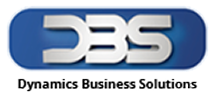Cloud payroll software reshapes the scene of workforce financial management. The global market will reach USD 17.39 billion by the end of 2027. This rapid growth makes sense as 40% of organizations plan to modernize their payroll systems by moving from on-premise solutions to cloud-based alternatives
Your first cloud based payroll system or a switch from offline payroll software brings financial implications beyond the price tag. Cloud based payroll software optimizes operations through automated tasks. Payroll software cloud based solutions come with reliable security measures that outperform traditional systems. Market projections show more than 95% of new digital workloads will run on cloud-native platforms by 2025. The decision affects both immediate savings and long-term financial efficiency.
This piece breaks down the ground costs and benefits of both options to help determine which approach will save your business more money in 2025. We also get into how solutions like DynaPay blend with Microsoft Dynamics 365 Finance and Operations and Business Central to provide detailed payroll management in the cloud.
Upfront and Ongoing Costs: Cloud vs On-Premise Payroll
A comparison of payroll solutions reveals substantial differences in how costs build up over time. Cloud and on-premise systems differ in more ways than just their basic pricing structure.
Original Investment: Subscription vs Licensing Fees
The basic difference comes down to payment models. Cloud payroll software works on a subscription basis with monthly or annual fees plus per-employee costs. This approach turns big upfront costs into manageable operational expenditures (OpEx). On-premise solutions need a large initial capital expenditure (CapEx) for perpetual licensing. These licenses can cost anywhere from £800 to over £8,000 for enterprise systems.
Small businesses with fewer than 10 employees might pay up to £86 monthly for cloud-based systems. Larger organizations with 500+ employees could spend £2,500+ monthly.
Hidden Costs: Hardware, IT Staff, and Maintenance
On-premise payroll solutions come with many hidden costs that affect the total ownership cost:
- Hardware purchases (servers, storage devices, network infrastructure)
- IT personnel for system management
- Power and cooling requirements
- Data migration expenses
- Regular training costs
- Maintenance and security updates
Studies show hidden costs can add about 30-40% to overall IT expenses for on-premise solutions. Businesses also tend to buy too much on-premise infrastructure and pay for capacity they don’t use.
Long-Term ROI: Pay-as-You-Go vs Capital Expenditure
Cloud-based payroll systems give better long-term returns. Research shows they achieve ROI 4.01 times higher than on-premises options. This comes from removing hardware replacement cycles, cutting IT support costs by 55%, and reducing consulting expenses by 65%.
The pay-as-you-go model helps business flexibility. Companies can scale resources based on actual needs instead of projected requirements. DynaPay for Dynamics 365 Business Central represents this flexibility by offering integrated payroll that grows with your business without needing more hardware investments.
On-premise solutions might look affordable for stable, long-term operations. However, cloud payroll software ended up providing better financial efficiency by reducing overhead and eliminating hidden costs.
Deployment and Maintenance: Time, Resources, and Complexity
Cloud payroll software saves more time than traditional on-premise systems and this directly affects your profits. The way these systems are set up and maintained shows clear operational differences beyond just the costs.
Setup Time: Instant Access vs Manual Installation
The two options need very different amounts of time to set up. Cloud-based payroll software usually takes three to six months to deploy based on how complex the system is and what business processes need changes. This saves much more time compared to on-premise solutions that need extensive preparation and integration work.
Cloud solutions completely remove the traditional installation process. Cloud payroll software gives you:
- Instant access when you subscribe
- Easy setup based on what your business needs
- Quick data transfer from old systems
IT Resource Allocation: Vendor-Managed vs In-House Teams
On-premise payroll systems need a dedicated IT team, which creates ongoing work. Cloud-based payroll solutions let organizations skip managing servers, installations, and updates because the provider handles everything.
Cloud payroll systems also turn IT costs into predictable expenses. Your company won’t face surprise costs like system upgrades or extra staff hours for maintenance. This lets IT teams work on important projects instead of routine payroll system tasks.
Update Cycles: Automatic Cloud Updates vs Manual Patches
The biggest difference shows up in how updates happen. Cloud payroll software updates automatically throughout the year and adds new features without human involvement. On-premise ERPs need yearly manual updates to stay current.
This difference applies to regulatory compliance too. Cloud-based payroll automatically updates tax rates, limits, and schedules as rules change in real time. You don’t need to download or manually update anything – a huge advantage since compliance rules keep changing.
DynaPay offers cloud-based payroll that works perfectly with Microsoft Dynamics 365. This automated maintenance approach removes the burden of manual updates while keeping you compliant.
Operational Efficiency and Employee Experience
Modern workforce expectations have changed substantially, especially when you have employees who need to interact with payroll systems. Daily operations highlight the stark differences between cloud and on-premise solutions.
Remote Access: Anywhere Access vs Office-Only Use
Cloud payroll software lets team members access the system from anywhere with uninterrupted internet connectivity. Businesses that embrace hybrid work models after the pandemic find this accessibility valuable. Payroll managers can process payments, approve requests, and run operations from home, while traveling, or at the office.
On-premise payroll systems limit access to the organization’s internal network. These systems work without internet connections and minimize disruptions during outages. However, this benefit reduces flexibility. Teams must be physically present to handle payroll functions, which creates bottlenecks during critical pay periods.
Employee Self-Service: Built-In Portals vs Manual Requests
Cloud based payroll systems offer a major operational advantage through their self-service functionality. Employee portals help staff members handle various tasks independently. They can check their payslips and tax documents. Personal information updates become simple. Time tracking and leave requests happen smoothly. Direct deposit details stay under employee control.
HR teams benefit from reduced administrative work while employees enjoy better service. Research shows these portals cut down payroll-related questions to HR departments substantially.
On-premise solutions lack these integrated self-service features. Staff must handle routine requests manually that cloud systems process automatically.
Compliance Handling: Auto-Updates vs Manual Monitoring
Regulatory compliance creates another key operational difference. Cloud based payroll software updates automatically with new regulations without manual work. One provider rolled out 510 US compliance updates in a year – almost two updates every working day.
Offline payroll software needs organizations to implement updates manually to match IRAS and other tax authority rules. This creates risk exposure. IRS penalties start accumulating from day one of missed or incorrect payments at 2% of unpaid deposits.
Solutions like DynaPay for Microsoft Dynamics 365 Business Central show how cloud payroll systems remove these compliance burdens and optimize operations.
Scalability and Integration with Microsoft Dynamics 365
Modern businesses need payroll systems that adapt quickly. Cloud and on-premise solutions show clear differences in how they scale and integrate with enterprise systems like Microsoft Dynamics 365.
Scaling with Growth: Flexible Cloud vs Rigid On-Premise
Cloud payroll software’s scalability advantages outperform on-premise solutions. Organizations can adjust their capacity based on changing needs without investing heavily in infrastructure. This horizontal scaling approach—like methods used by major tech companies—lets businesses add resources whenever needed instead of overprovisioning.
On-premise payroll solutions face major scaling challenges. These systems need extra hardware purchases, upgrades, and face potential downtime to expand. Growing businesses find this rigid structure expensive and time-consuming.
Integration Capabilities: API-Ready vs Custom Development
Each platform takes a unique approach to integration. Cloud payroll software comes API-ready and connects smoothly with other business systems. Pre-built integration features reduce complexity while data exchange remains strong.
On-premise systems need custom development to work well, which leads to:
- Higher development costs from $480 to $1,440 monthly for simple maintenance
- Custom connections take longer to implement
- Security updates and documentation need extra resources
Custom APIs give you more control but need more resources than cloud solutions’ ready-made integration features.
DynaPay and HR Blizz: Cloud Payroll for Dynamics 365 FO and BC
Microsoft Dynamics 365 users get purpose-built cloud payroll integrations. DynaPay offers a complete human resource and payroll solution designed for Microsoft Dynamics 365 Business Central. Native AL development tools help make use of the platform’s features through:
- Direct integration with Dynamics 365 BC financials
- Subscription pricing that covers unlimited employees
- Users can access the system from computers, tablets, or mobile devices anytime
Solutions for Dynamics 365 Finance and Operations help organizations run everything in one environment without integration issues. These cloud-based payroll systems remove the “hassle, cost and technical difficulties” of connecting separate systems. The Microsoft ecosystem’s native development makes this possible.
Comparison Table
| Aspect | Cloud Payroll Software | On-Premises Payroll Software |
| Original Costs | Monthly/annual subscription + per-employee cost – Small business (<10 employees): Up to £86/month – Large org (500+ employees): £2,500+/month |
High upfront CapEx – Perpetual licensing: £800 to £8,000+ for enterprise systems |
| Implementation Time | 3-6 months | Longer implementation (exact time not specified) |
| Hidden Costs | Minimal hidden costs | Additional 30-40% of IT expenses for: – Hardware purchases – IT personnel – Power and cooling – Data migration – Training – Maintenance |
| Updates & Maintenance | – Automatic updates – Up-to-the-minute compliance updates – Vendor-managed maintenance |
– Manual patches and updates – Annual manual updates required – In-house maintenance needed |
| Access & Flexibility | – Anywhere access – Remote work compatible – Built-in employee self-service portals |
– Office-only access – Network-dependent – Limited self-service capabilities |
| ROI | 4.01 times greater than on-premises – 55% reduction in IT support costs – 65% decrease in consulting expenses |
Lower long-term ROI compared to cloud solutions |
| Scalability | – Flexible scaling – Pay-as-you-go model – Easy capacity adjustment |
– Requires hardware purchases for scaling – Rigid structure – Nowhere near as adaptable during upgrades |
| Integration | – API-ready – Pre-built integration capabilities – Continuous connection |
– Requires custom development – $480-$1,440 monthly maintenance costs – Longer implementation time |
Cloud Payroll vs On-Premises: How Dynamo Payroll Saves You Money in 2025
For businesses in the GCC, managing payroll efficiently while keeping costs down has become a top priority in 2025. Over the past 12 years, Dynamo Payroll — Cloud-Based Payroll, Human Resources, and Employee Self-Service Software for Microsoft Dynamics 365 Finance and Operations (FO) — has helped companies across the region achieve just that.
Unlike traditional on-premises payroll systems, Dynamo Payroll is a fully cloud-based solution that eliminates the need for expensive hardware, server maintenance, and costly upgrades. Businesses no longer face large upfront investments or recurring IT infrastructure costs. Instead, Dynamo Payroll provides a predictable subscription model that includes regular updates, enterprise-grade security, and ongoing compliance with UAE WPS and GCC labor laws — all without hidden fees.
Dynamo Payroll’s automation features — including salary processing, tax calculations, end-of-service benefits, and WPS file generation — save HR teams countless hours of manual work, translating into lower administrative costs. The built-in Employee Self-Service (ESS) portal further reduces workload by empowering employees to handle routine tasks like accessing payslips or submitting leave requests on their own.
For over a decade, businesses in the UAE, Qatar, Oman, Kuwait, and Bahrain have trusted Dynamo Payroll to deliver cost savings, compliance, and efficiency — helping them focus resources on growth rather than payroll headaches.
Cloud Payroll vs On-Premises: How DynaPay Saves You Money in 2025
In 2025, businesses are increasingly choosing cloud-based solutions to cut costs and boost efficiency — and DynaPay Human Resources & Payroll Solution for Microsoft Dynamics 365 Business Central (BC) is leading the way for SMEs across the GCC. Designed specifically for growing businesses, DynaPay offers a smarter, more cost-effective alternative to traditional on-premises payroll systems.
On-premises payroll software often requires heavy upfront investments in hardware, servers, IT staff, and ongoing maintenance. Every upgrade, patch, or security improvement adds to the cost. In contrast, DynaPay is a fully cloud-based payroll and HR solution that eliminates these capital expenses. You benefit from a predictable subscription model that includes automatic updates, cloud security, and compliance with UAE WPS and GCC labor laws — without worrying about hidden IT costs.
DynaPay helps businesses save more by automating time-consuming tasks like salary processing, leave approvals, end-of-service benefits, and WPS file generation. The integrated Employee Self-Service (ESS) portal allows employees to access payslips, submit leave requests, and update personal data independently, cutting HR admin workload and costs.
For years, DBS has helped SMEs across the UAE, Oman, Qatar, Kuwait, and Bahrain reduce payroll costs, simplify HR, and stay compliant — all with the power of DynaPay.
Conclusion
Making the Right Choice for Your Business in 2025
Cloud payroll software makes more financial sense than on-premise solutions for most businesses heading into 2025. The subscription model turns big capital expenses into manageable monthly costs. It also removes many hidden costs that come with traditional systems.
Numbers tell a compelling story about cloud solutions’ value. These systems deliver 4.01 times more ROI than on-premises options. Companies can cut IT support costs by 55% and slash consulting expenses by 65%. Cloud payroll systems update themselves automatically. They manage compliance in real time and let employees handle their own services, which cuts down on administrative work.
Cloud systems win on speed and access too. Companies don’t have to wait through long setups or stay tied to their offices. Teams can work from anywhere – a huge plus as hybrid work becomes the norm.
Growing businesses need systems that grow with them. DynaPay for Microsoft Dynamics 365 Business Central lets companies expand without buying new hardware. This system works smoothly with Microsoft’s tools and removes the headaches of connecting different programs.
Some organizations might still prefer on-premise payroll software, especially those with special security needs or stable staff numbers. But the math shows cloud solutions save money for most companies. They cut overhead, eliminate hidden costs, and help operations run better.
Moving to cloud payroll software does more than upgrade technology. It changes how businesses handle their workforce finances. The returns are real and will keep growing through 2025 and beyond.
Dynamics Business Solutions (DBS) is certified Microsoft Dynamics partner in UAE, we take pride in our ability to develop and deploy the right business solution that matches global client’s requirements. DBS has developed in-house state of the art solutions for HR and Payroll, Dynamo and DynaPay on top of Microsoft Dynamics 365 FO and Business Central respectively. These solutions are catering the all business needs of HR and Payroll departments. We provide best services and support to our clients.
To know more, speak to our expert at Dubai: +971 4 447 5525 Jeddah: +966 508162072 or inbox us your query at info@dynamics.ae OR visit www.dynamics.ae
FAQs
Q1. Is cloud payroll software more cost-effective than on-premises solutions?
Generally, yes. Cloud payroll software typically offers lower upfront costs, eliminates hidden expenses like hardware and IT staff, and provides better long-term ROI. Studies show cloud solutions achieve ROI 4.01 times greater than on-premises alternatives.
Q2. How does the implementation time differ between cloud and on-premises payroll systems?
Cloud payroll software deployment usually takes three to six months, while on-premises solutions often require longer implementation times due to complex manual setups, extensive preparation, and integration efforts.
Q3. What are the main advantages of cloud payroll software in terms of updates and maintenance?
Cloud payroll software offers automatic updates throughout the year, including real-time compliance updates, without manual intervention. This contrasts with on-premises systems that rely on annual manual updates and patches, reducing IT workload and ensuring continuous compliance.
Q4. How does scalability differ between cloud and on-premises payroll solutions?
Cloud payroll software offers flexible scalability, allowing businesses to easily adjust capacity based on changing requirements without substantial infrastructure investments. On-premises solutions typically require additional hardware purchases and system upgrades for scaling, making it more expensive and time-consuming.
Q5. What integration capabilities do cloud payroll solutions offer for Microsoft Dynamics 365 users?
Purpose-built cloud payroll integrations like DynaPay offer seamless integration with Microsoft Dynamics 365 Business Central, providing flexible subscription pricing, anywhere access, and native development within the Microsoft ecosystem. This eliminates the need for custom development and reduces integration complexities.




